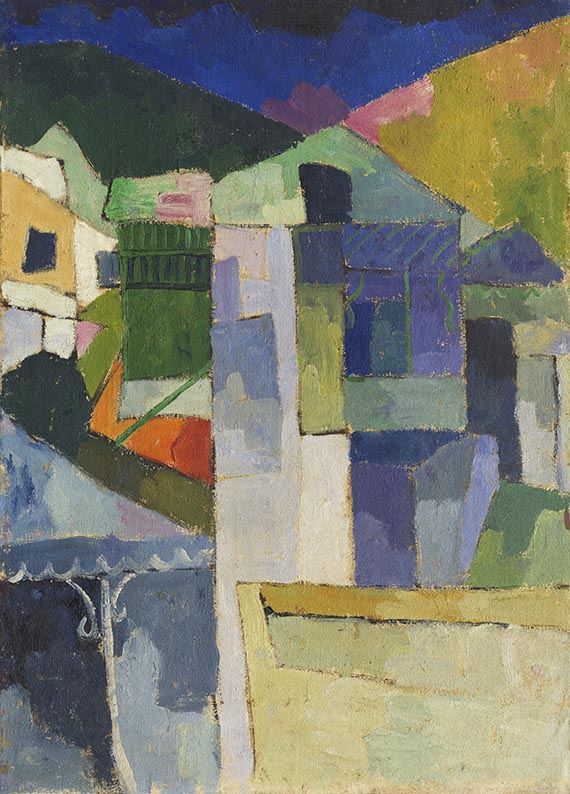Dictionary


Early Florentine Renaissance
The early Florentine Renaissance, which began in circa 1420, produced important artists, whose work had a decisive influence on the stylistic development of all forms of Renaissance art. Masaccio (1401-28) was one of the leading painters of the period. One of his most famous works is the "Trinity" (c. 1425-27) in the Santa Maria Novella church in Florence, in which he demonstrated exemplary use of systematic linear perspective in his construction of pictorial space. Other key figures include Fra Angelico, Domenica Guirlandaio, Andrea del Castagno and the brothers Antonio and Piero del Pollaiuolo. The central figure of the Florentine Renaissance was, however, Sandro Botticelli (1445-1510). He combined influences from antiquity with the philosophical principles of neo-Platonism in his mythological paintings, and therein simultaneously set eloquent examples of virtue.
The most important sculptors of the period include Andrea del Verrocchio, Nanni di Banco and above all, Donatello (c. 1386-1466), whose sculptures overcame the delicateness of Gothic art, replacing it with firmly outlined, rounded sculptures of figures. Whilst Donatello made reference to classical art - his bronze "David" (c.1430) was modelled in the antique controposto stance - the carefully executed faces and hands of his sculptures are also evidence of his detailed studies of the human body.
Donatello became famous with his invention of "rilievo schiacciato". This technique created a strong impression of spatial depth according to the rules of perspective, through a skilful layering of pictorial space and gradual flattening of the picture’s elements. Lorenzo Ghiberti (1378-1455), used the same technique for his main work, the reliefs on the "Gates of Paradise" on the Florentine Bapistry (1425-52).
The early Florentine Renaissance, which began in circa 1420, produced important artists, whose work had a decisive influence on the stylistic development of all forms of Renaissance art. Masaccio (1401-28) was one of the leading painters of the period. One of his most famous works is the "Trinity" (c. 1425-27) in the Santa Maria Novella church in Florence, in which he demonstrated exemplary use of systematic linear perspective in his construction of pictorial space. Other key figures include Fra Angelico, Domenica Guirlandaio, Andrea del Castagno and the brothers Antonio and Piero del Pollaiuolo. The central figure of the Florentine Renaissance was, however, Sandro Botticelli (1445-1510). He combined influences from antiquity with the philosophical principles of neo-Platonism in his mythological paintings, and therein simultaneously set eloquent examples of virtue.
The most important sculptors of the period include Andrea del Verrocchio, Nanni di Banco and above all, Donatello (c. 1386-1466), whose sculptures overcame the delicateness of Gothic art, replacing it with firmly outlined, rounded sculptures of figures. Whilst Donatello made reference to classical art - his bronze "David" (c.1430) was modelled in the antique controposto stance - the carefully executed faces and hands of his sculptures are also evidence of his detailed studies of the human body.
Donatello became famous with his invention of "rilievo schiacciato". This technique created a strong impression of spatial depth according to the rules of perspective, through a skilful layering of pictorial space and gradual flattening of the picture’s elements. Lorenzo Ghiberti (1378-1455), used the same technique for his main work, the reliefs on the "Gates of Paradise" on the Florentine Bapistry (1425-52).
Offers
Headquarters
Joseph-Wild-Str. 18
81829 Munich
Phone: +49 89 55 244-0
Fax: +49 89 55 244-177
info@kettererkunst.de
Louisa von Saucken / Undine Schleifer
Holstenwall 5
20355 Hamburg
Phone: +49 40 37 49 61-0
Fax: +49 40 37 49 61-66
infohamburg@kettererkunst.de
Dr. Simone Wiechers / Nane Schlage
Fasanenstr. 70
10719 Berlin
Phone: +49 30 88 67 53-63
Fax: +49 30 88 67 56-43
infoberlin@kettererkunst.de
Cordula Lichtenberg
Gertrudenstraße 24-28
50667 Cologne
Phone: +49 221 510 908-15
infokoeln@kettererkunst.de
Hessen
Rhineland-Palatinate
Miriam Heß
Phone: +49 62 21 58 80-038
Fax: +49 62 21 58 80-595
infoheidelberg@kettererkunst.de
We will inform you in time.




